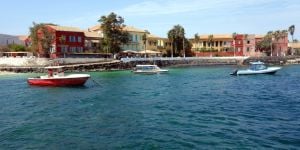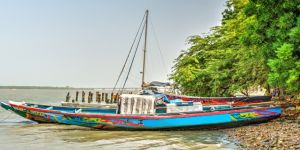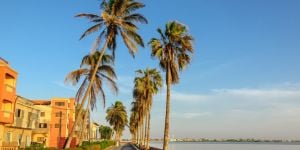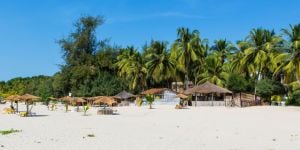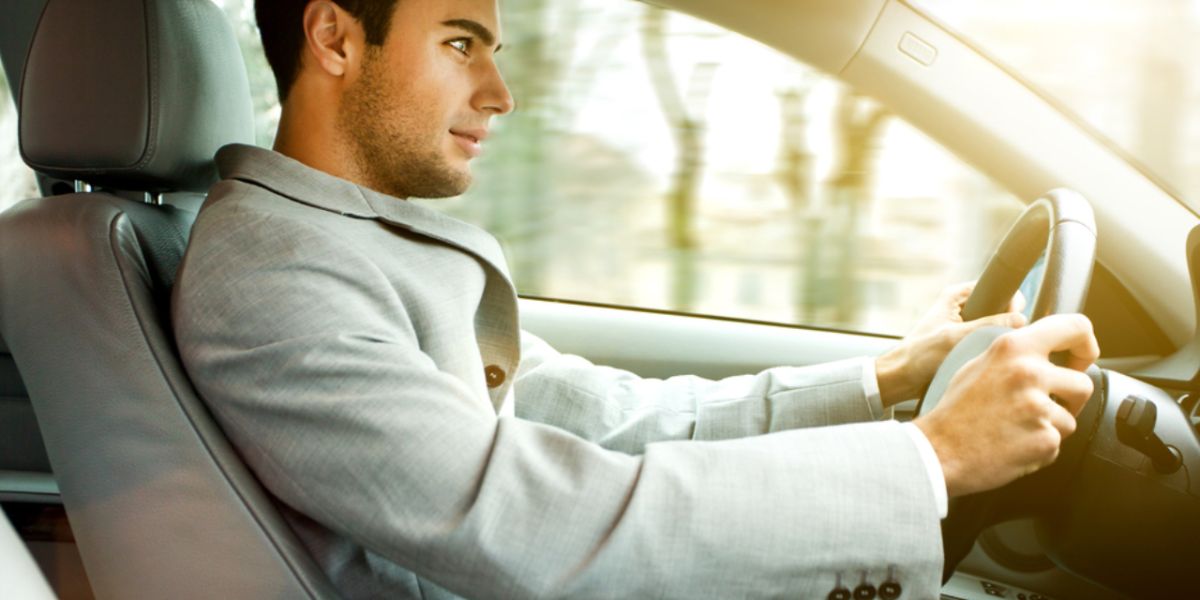
Getting around Senegal’s major cities is easy with taxis costing comparatively little and public transport even less. However, if you want to go further afield, travel intercity or just have the convenience of your own set of wheels, then you’ll probably be looking to drive. For most people, this only requires having a valid driver’s license and knowledge of the country's road traffic regulations. However nationals of some countries may have to convert their national driver's licence to be allowed to drive in Senegal.
The road network in Senegal
Senegal is deemed to be one of Africa's most modern countries. However, its roads suffer from a chronic lack of maintenance. Hence, travelling is not likely to be as smooth and comfortable as expected. In fact, most roads have some degree of potholes and cracks depending on how affected they are by water damage (rainfall during Senegal's rainy season often leads to partial or total road destruction).
In major cities, the main arterial roads will be tarmacked, but as soon as you turn down a side-street, it is likely to be dirt track or sand track. These side-streets often become flooded during the rains, but the pools of water that form tend to evaporate quickly due to the heat.
In addition, 170km of motorway has recently been built from Dakar to Thiès, Thiès to Touba and Thiès to Mbour. The new motorways are modern and relatively empty with most locals using the national routes due to the péage (toll) costs.
The Highway Code in Senegal
Before driving in Senegal, bear in mind that the concept of driving schools is a relatively new phenomenon. Many of the country's drivers will never have taken a test and will have learned simply by doing. As such, they are at times both erratic and safe drivers - constantly aware of the many hazards that could happen.
Vehicles in Senegal
You are likely to find two types of vehicles in Senegal: animal-driven vehicles and engine-driven vehicles. Horse-drawn carts (known as calèches) share the streets with bicycles, scooters, motorbikes, cars and trucks.
The first thing you will notice is the state of many vehicles in Senegal: not many would pass a European MOT and Senegalese nationals are not quite as picky about internal or external aesthetics (expect to see dents and broken dashboard displays, etc). In addition, many of the vehicles' problems are simply painted over and therefore could break down at any time. One of the biggest causes of traffic jams is broken down cars blocking a lane.
It goes without saying that trucks without mirrors, headlights or steady tires can be dangerous, so it's important that fellow drivers are aware when you make a manoeuvre. For example, you should honk when overtaking to ensure the vehicle does not pull out.
Road signs in Senegal
If you plan to drive in Senegal, you should try to drive the way locals do. In fact, most roads do not have signs. The only thing you will have to watch out for is your speed so as to avoid potholes, cracks and speed bumps which are found at village entrances and exits. There are hardly any traffic lights and many cars will take shortcuts over flat ground (be it over a football pitch or through a garage) whenever possible. Right of way on roundabouts is for those who are already on it.
Driving in Dakar
If you hail from a Western country, you are most probably used to driving in streets where pedestrians walk on sidewalks and shops are found in concrete buildings. But if you are to drive in Dakar, you had better forget about these standards. In fact, the capital city is known for its chaotic traffic and lengthy traffic jams. You will also have to get used to people, animals and other vehicles walking, crossing and driving across the road at random intervals. You need to be very patient and use your mirrors and horn to good effect.
Driver's licence in Dakar
You will be authorised to drive in Senegal if you have an international driver's licence. Otherwise, you will have to convert your national driver's licence into a Senegalese driver's licence at the Ministry of Transport's Land Transport Department (Avenue André Peytavin X Corniche - POB 2083 - Dakar / Phone: 33 842 36 43)
Nationals of countries where drivers' licences are issued in French are allowed to drive with their national driver's licence for a year. Thereafter, they are required to apply for conversion at the Driver's licence and Driving schools' division by producing the following documents:
- Their original driver's licence
- A residence certificate
- Three passport-size photos
- An authenticity certificate (or computerised report) issued by your home country
- 10,000 CFA issuing fee for the light vehicles category
- A certified photocopy of your identity card
- A medical certificate issued by the officials' health centre.
Obtain a Senegalese driver's licence
According to local authorities, any Senegalese resident who is at least 18 years old can apply for a driver's licence in the light vehicles category, that is B-Class (3.5 tonnes and up to 8 seats). Note that registering with a driving school is not yet compulsory in the country. However, it is more appropriate to take driving lessons before applying for a driver's licence. You will then be entitled to at least 10 hours of driving lessons along with theoretical courses.
Once you have accomplished this step, you will have to undergo a medical test so as to determine your ability to drive. A medical certificate will then be issued. Finally, you will have to take part in a driving test. The request has to be made at the Regional Land Transport Division. The following documents are to be produced:
- 4 passport-size photos
- A residence certificate
- A civil status document or a certified copy of your national identity card
- A tax stamp of 4,000 CFA
- An issuance stamp of 10,000 CFA
- A medical certificate proving your ability to drive.
Good to know:
- The speed limit is stated in km/h. Speed is limited to 90 km/h on highways, 50 km/h in residential areas and 130 km/h on motorways.
- Senegal drives on the right-hand side of the road.
- Priority is on the right side of the road at roundabouts. Larger vehicles have priority over smaller ones.
- Paved roads, which are often damaged, tend to be lined by parallel tracks that can be in better condition.
- Pedestrians (especially children) and animals tend to cross the road anywhere, even on the highway.
- In Dakar, driver's licence applications are accepted only on Mondays and Thursdays. Issuing procedures can take an average of 24 hours.
- You will always need to carry a Carte Grise (vehicle registration certificate) and a copy of the insurance at all times (keep them in the glove box) as these will be requested if you are stopped by police.
Useful links:
Public Service
Land Transport Management
Land Transport Regional Divisions
Driver's license and Driving schools Division
We do our best to provide accurate and up to date information. However, if you have noticed any inaccuracies in this article, please let us know in the comments section below.
